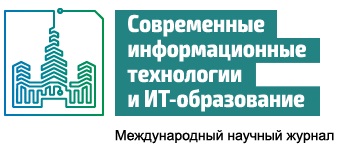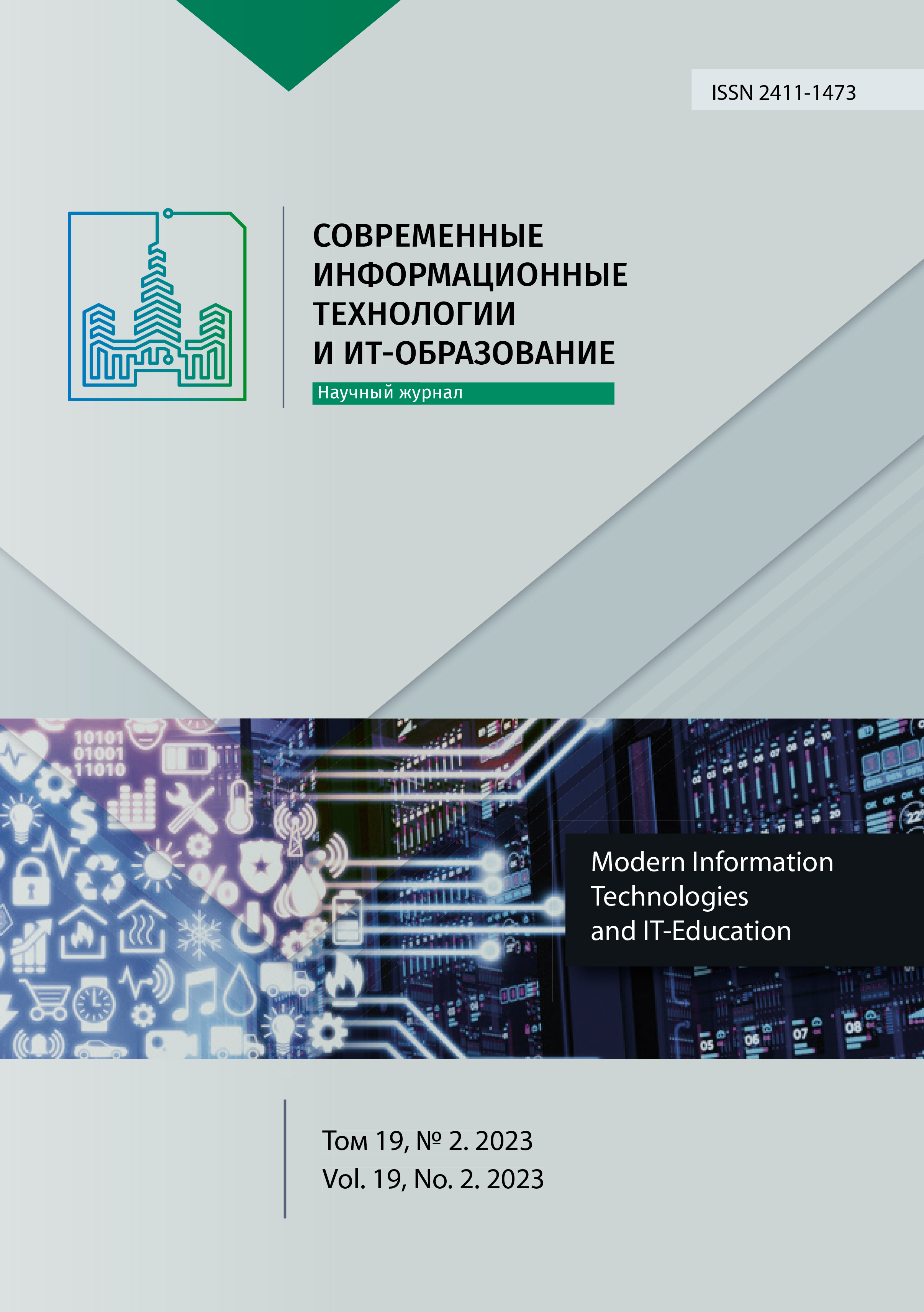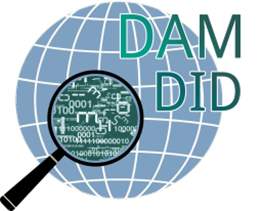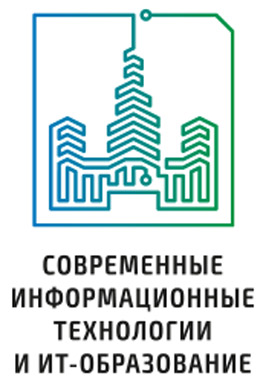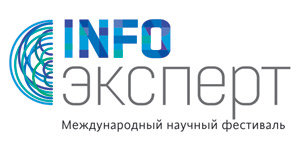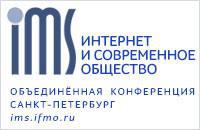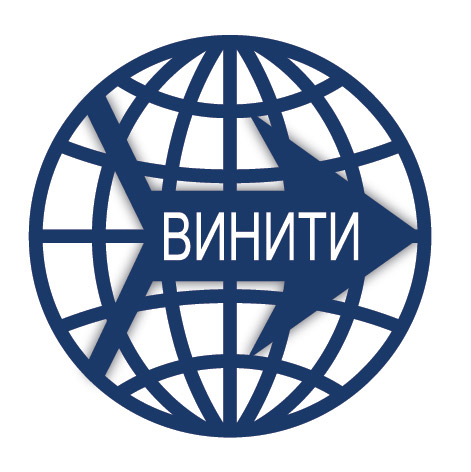Метод построения цифровых двойников для решения задач эффективного управления и развития распределенных центров сбора, хранения и обработки данных
Аннотация
Современные научные эксперименты класса «мегасайенс» не могут обойтись без распределенных центров сбора, хранения и обработки данных. Для проектирования и развития таких сложных систем предлагается использовать цифровые двойники. В статье сформулирован метод построения цифровых двойников распределенных центров сбора, хранения и обработки данных. Ключевым этапом метода является моделирования, которое должно учитывать характеристики потоков данных и задач, а также вероятности возможных изменений в процессах функционирования системы. Помимо этого, важными этапами являются процессы описания системы и представления результатов работы цифрового двойника. В связи с этим особое внимание в статье уделено описанию основных алгоритмы для реализации метода построения цифровых двойников.
Литература
2. Kukushkin K., Ryabov Yu., Borovkov A. Digital Twins: A Systematic Literature Review Based on Data Analysis and Topic Modeling. Data. 2022;7(12):173. https://doi.org/10.3390/data7120173
3. Barricelli B.R., Casiraghi E., Fogli D. A Survey on Digital Twin: Definitions, Characteristics, Applications, and Design Implications. IEEE Access. 2019;7:167653-167671. https://doi.org/10.1109/ACCESS.2019.2953499
4. Wu H., Ji P., Ma H., Xing L. A Comprehensive Review of Digital Twin from the Perspective of Total Process: Data, Models, Networks and Applications.Sensors. 2023;23(19):8306. https://doi.org/10.3390/s23198306
5. Sharma A., Kosasih E., Zhang J., Brintrup A., Calinescu A. Digital twins: State of the art theory and practice, challenges, and open research questions. Journal of Industrial Information Integration. 2022;30:100383. https://doi.org/10.1016/j.jii.2022.100383
6. Nemati K., Zabalegui A., Bana M., Seymour M.J. Quantifying data center performance. In: 2018 34th Thermal Measurement, Modeling & Management Symposium (SEMI-THERM). San Jose, CA, USA; 2018. p. 141-147. https://doi.org/10.1109/SEMI-THERM.2018.8357365
7. Korenkov V.V. Trends and prospects for the development of distributed computing and big data analytics to support Megascience Projects. Nuclear Physics. 2020;83(6):534-538. (In Russ., abstract in Eng.) https://doi.org/10.31857/S0044002720050153
8. Tao F., Cheng J., Qi Q., Zhang M., Zhang H., Sui F. Digital twin-driven product design, manufacturing and service with big data. The International Journal of Advanced Manufacturing Technology. 2018;94(9-12):3563-3576. https://doi.org/10.1007/s00170-017-0233-1
9. Priakhina D.I., Korenkov V.V. The Relevance of Creating a Digital Twin for Managing Distributed Centers for Collecting, Storing and Processing Data. Modern Information Technologies and IT-Education. 2023;19(2):262-271. (In Russ., abstract in Eng.) EDN: SKRAHZ
10. Korenkov V.V., Nechaevskiy A.V., Ososkov G.A., Pryahina D.I., Trofimov V.V., Uzhinskiy A.V. Simulation of Grid and Cloud Services as the Means of the Efficiency Improvement of Their Development. CEUR Workshop Proceedings. 2014;1297:13-19. Available at: https://ceur-ws.org/Vol-1297/13-19_paper-4.pdf (accessed 08.09.2023). (In Russ., abstract in Eng.)
11. Kadochnikov I., Korenkov V., Mitsyn V., Pelevanyuk I., Strizh T. Service monitoring system for JINR Tier-1. EPJ Web of Conferences. 2019;214:08016. https://doi.org/10.1051/epjconf/201921408016
12. Korenkov V.V., Nechaevskiy A.V., Ososkov G.A., Pryakhina D.I., Trofimov V.V., Uzhinskiy A.V. Grid and cloud services simulation as an important step of their development. Sistemy i Sredstva Informatiki = Systems and Means of Informatics. 2015;25(1):4-19. (In Russ., abstract in Eng.) https://doi.org/10.14357/08696527 50 0
13. Nechaevskiy A.V., Pryahina D.I., Uzhinskiy A.V. Web-service development for the physical experiments data storage and processing simulation. Sistemnyj analiz v nauke i obrazovanii = System Analysis in Science and Education. 2015;(4):28-35. (In Russ., abstract in Eng.) EDN: WMEKGF
14. Korenkov V., Nechaevskiy A., Ososkov G., Pryahina D., Trofimov V., Uzhinskiy A., Balashov N. Web-Service Development of the Grid- loud Simulation Tools. Procedia Computer Science. 2015;66:533-539. https://doi.org/10.1016/j.procs.2015.11.060
15. Korenkov V., Nechaevskiy A., Ososkov G., Pryahina D., Trofimov V., Uzhinskiy A. Simulation concept of NICA-MPD-SPD Tier0-Tier1 computing facilities. Physics of Particles and Nuclei Letters. 2016;13(5):693-699. https://doi.org/10.1134/S1547477116050290
16. Kutovskiy N.A., Nechaevskiy A.V., Ososkov G.A., Pryahina D.I., Trofimov V.V. Simulation of interprocessor interactions for MPI-applications in the cloud infrastructure. Computer Research and Modeling. 2017;9(6):955-963. (In Russ., abstract in Eng.) https://doi.org/10.20537/2076-7633-2017-9-6-955-963
17. Nechaevskiy A., Ososkov G., Pryahina D., Trofimov V., Li W. Simulation approach for improving the computing network topology and performance of the China IHEP Data Center. EPJ Web of Conferences. 2019;214:08018. https://doi.org/10.1051/epjconf/201921408018
18. Batty M. Digital twins. Environment and Planning B: Urban Analytics and City Science. 2018;45(5):817-820. https://doi.org/10.1177/2399808318796416
19. Grieves M., Vickers J. Digital Twin: Mitigating Unpredictable, Undesirable Emergent Behavior in Complex Systems. In: Kahlen J., Flumerfelt S., Alves A. (eds.) Transdisciplinary Perspectives on Complex Systems. Cham: Springer; 2017. . 85-113. https://doi.org/10.1007/978-3-319-38756-7_4
20. Boschert S., Rosen R. Digital Twin The Simulation Aspect. In: Hehenberger P., Bradley D. Mechatronic Futures. Cham: Springer; 2016. p. 59-74. https://doi.org/10.1007/978-3-319-32156-1_5
21. Cimino C., Negri E., Fumagalli L. Review of digital twin applications in manufacturing. Computers in Industry. 2019;113:103130. https://doi.org/10.1016/j.compind.2019.103130
22. Halenar I., Juhas M., Juhasova D., Borkin D. Virtualization of Production Using Digital Twin Technology. In: 2019 20th International Carpathian Control Conference (ICCC). Krakow-Wieliczka, Poland: IEEE Computer Society; 2019. p. 1-5. https://doi.org/10.1109/CarpathianCC.2019.8765940
23. Kamenshchikov M.A., Kornienko V.N. Grid i tehnologija otkrytyh system [Grid and open systems technology]. Journal of Information Technologies and Computation Systems. 2003;(3):45-50. Available at: https://www.mathnet.ru/links/0814f2883c17cc2147b89da94571bfe1/itvs697.pdf (accessed 08.09.2023). (In Russ., abstract in Eng.)
24. Korenkov V.V., Nechaevskiy A.V. DataGrid simulation packages. Sistemnyj analiz v nauke i obrazovanii = System Analysis in Science and Education. 2009;(1):21-35. (In Russ., abstract in Eng.) EDN: KNNWPL
25. Korenkov V.V., Nechaevskiy A.V., Ososkov G.A., Pryahina D.I., Trofimov V.V., Uzhinskiy A.V. Synthesis of the simulation and monitoring processes for the development of big data storage and processing facilities in physical experiments. Computer Research and Modeling. 2015;7(3):691-698. (In Russ., abstract in Eng.) https://doi.org/10.20537/2076-7633-2015-7-3-691-698

Это произведение доступно по лицензии Creative Commons «Attribution» («Атрибуция») 4.0 Всемирная.
Редакционная политика журнала основывается на традиционных этических принципах российской научной периодики и строится с учетом этических норм работы редакторов и издателей, закрепленных в Кодексе поведения и руководящих принципах наилучшей практики для редактора журнала (Code of Conduct and Best Practice Guidelines for Journal Editors) и Кодексе поведения для издателя журнала (Code of Conduct for Journal Publishers), разработанных Комитетом по публикационной этике - Committee on Publication Ethics (COPE). В процессе издательской деятельности редколлегия журнала руководствуется международными правилами охраны авторского права, нормами действующего законодательства РФ, международными издательскими стандартами и обязательной ссылке на первоисточник.
Журнал позволяет авторам сохранять авторское право без ограничений. Журнал позволяет авторам сохранить права на публикацию без ограничений.
Издательская политика в области авторского права и архивирования определяются «зеленым цветом» в базе данных SHERPA/RoMEO.
Все статьи распространяются на условиях лицензии Creative Commons «Attribution» («Атрибуция») 4.0 Всемирная, которая позволяет другим использовать, распространять, дополнять эту работу с обязательной ссылкой на оригинальную работу и публикацию в этом журналe.
